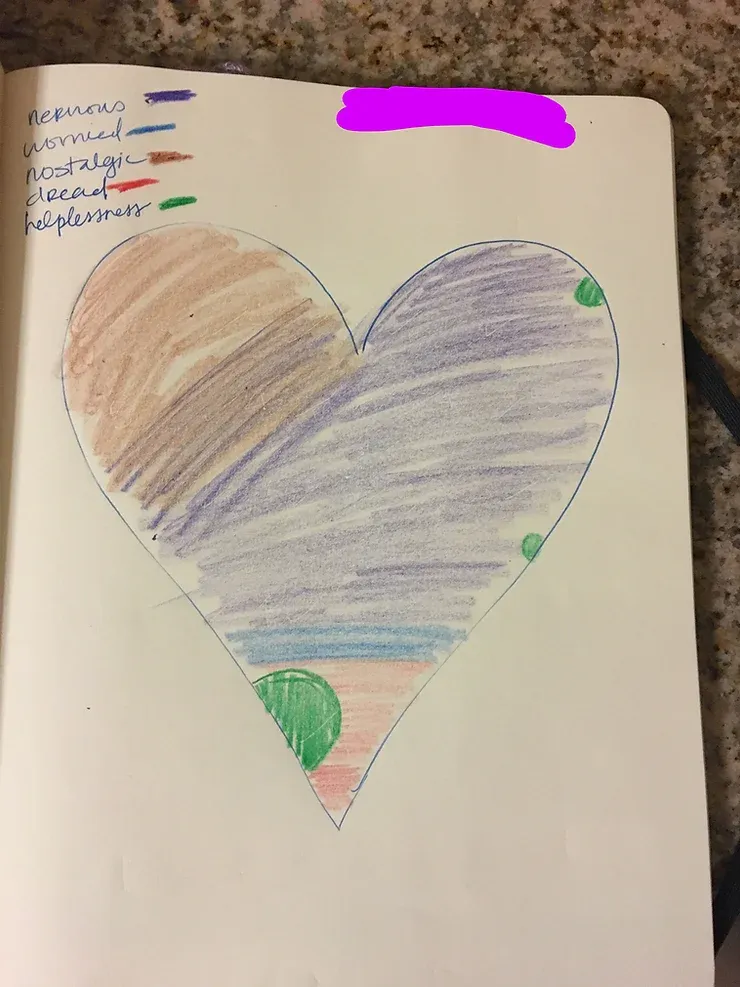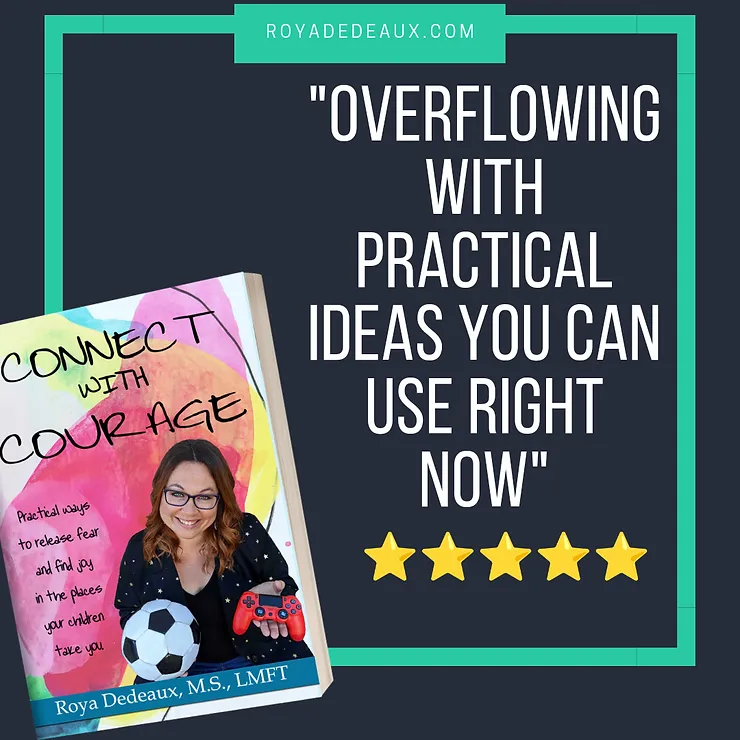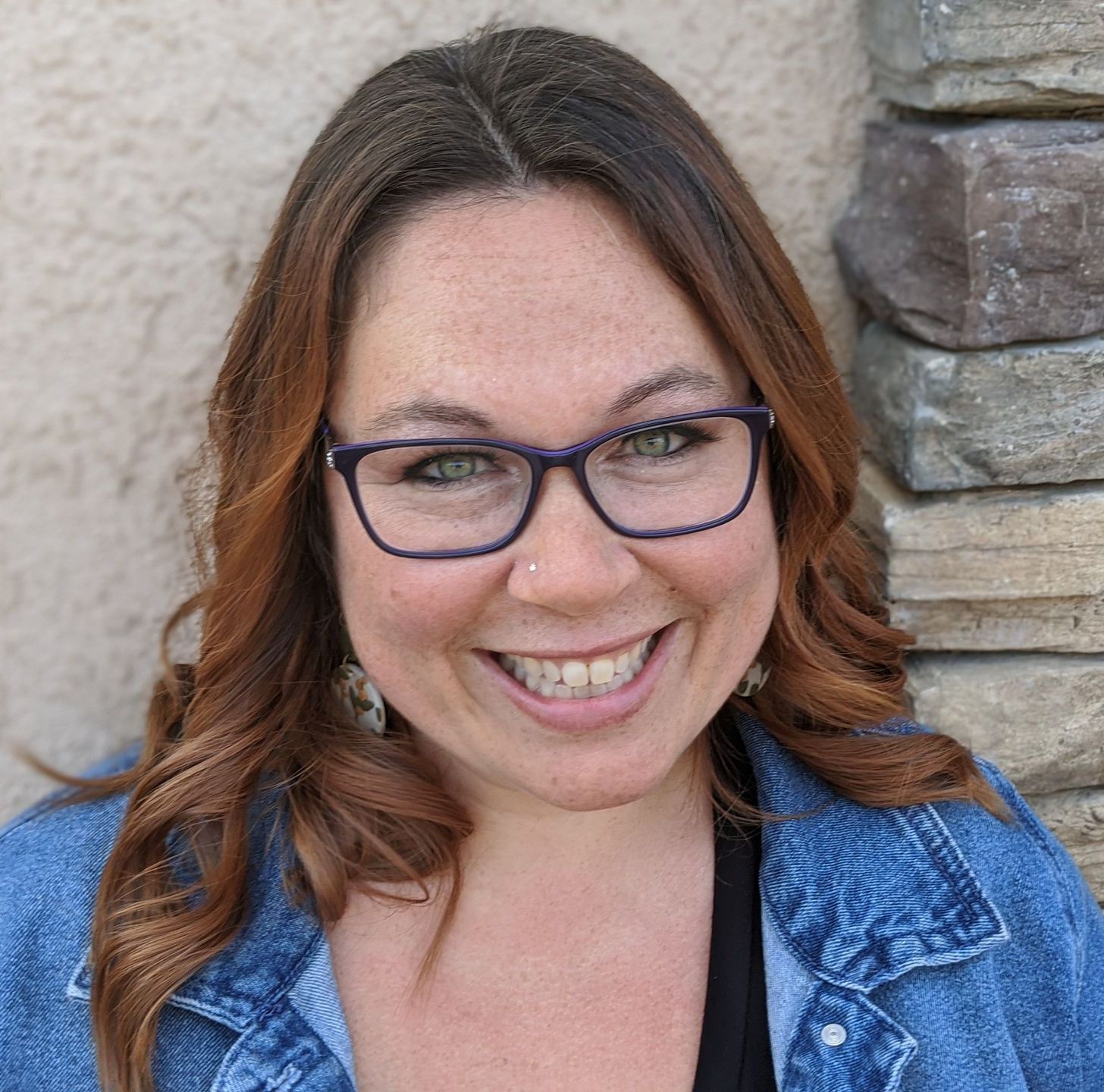Feeling Feels
I just asked my 4-year-old daughter what advice she had for mommies and daddies on how to be better mommies and daddies. Her suggestion was, "everybody tell everybody else more about their feelings, and if they have a hard time talking about it they should draw a heart and use colors to explain how they're feeling."
So there you have it, from the mouths of babes. This is why I do what I do.
The narrative therapy technique that she is talking about is something that I use with almost every single client that comes through my practice. I call it "feelings heart" because naming things is hard. What it is is an exercise in externalizing feelings, increasing emotional vocabulary, and identifying the nuance between different emotions. I asked my clients to come up with the five most prevalent emotions that they felt in the last week, choose a color to go with each one, and then color in a heart. The heart represents their week and the colors represent their emotions. There are no right answers. There are no wrong answers. It's process art, exploratory.

Because I have done this activity thousands of times with thousands of different people, including in classroom and workshop settings, I have seen such a wide variety of end results. Some people draw with strong, bold, decisive strokes. For others their hearts are blended, swirling, scattered. Some people draw what looks like walls between feelings, or boxes within boxes. Other people have patterns and shapes, jagged lines from one piece to another. Some people ask if they can put 10 feelings, while others have difficulty getting past two.
I want to reiterate that there is no wrong. Just information.
The trick to processing feeling hearts with clients is in how I comment on the finished product. If I look at somebody's heart and to me it looks chaotic or overwhelming or tangled or messy and I say that to them, that is my interpretation of their experience. It says more about me and my state of mind than it does about them. One person's chaos might be another person's excitement. One person's stark might be another person's peace. I try to make objective and observational statements. I make statements such as, "I noticed you spent more time using the blue." Or I ask questions like, "When you look at this which color jumps out at you first?"
This gives my client the chance to interpret it based on their meaning and their experience. It gives me the information that I use to move the session forward and help them explore more about their week. It provides a non-judgmental starting point to keep talking feelings.
I think we can use this in our parenting as well -- not just the actual exercise (which is a great assessment tool for all of us, and it can be wonderfully cathartic for people to be able to put on paper what can be difficult to talk about!) We can also adopt the usefulness of making objective, observational statements with your kids.
We've got years on them. This means we have years of messaging and baggage about just about everything. Sometimes we have baggage about the things they're interested in and the way they spend their time, and it's just too easy to impose our outlook on them. A common example is walking into a kid's messy room and looking around thinking, "oh my gosh how could anybody live like this? It just looks like chaos! How can you find anything?!" When what they are thinking is, "Look at all my wonderful stuff that I have! Everything is close to me! Look at all these things that remind me of my friends!" We have to be careful about not layering our interpretation and our value system on top of their experiences.
If we can stop before making the subjective statement, we leave the door open to hearing about their experience. If we can make an objective observation, it can give them the start to a whole story. If we can be curious about their meaning, we get to be let into their wonderful world. We get to extend and maybe even cross a bridge to our kids inner workings.
It's not always easy to do. It's a hard habit to break. It's especially difficult if you have a history of making (what feels to them as) judgemental statements. You will have to be extra careful not to have any kind of body language or tone that even vaguely hints of judgement.
The more open you are to hearing their version of the world, the more open they will be to share it with you. Then, as my 4-year-old says, we will all be better mommies and daddies.

Roya Dedeaux is a Licensed Marriage and Family Therapist with a focus on using creative tools like art, writing, and recreation as a way to help teens and their families who don't quite fit the mold.
Roya’s first book, Connect with Courage: practical ways to release fear and find joy in the places your kids take you is the result of her background in Recreation and Leisure Studies and Marriage and Family Therapy and is the base of her Connect with Courage Parenting Course.
She loves running her private practice, creating art prompts for her
two online art groups, and running games and challenges in the
free Recreate Parenting Facebook community! When she's not doing that, she loves to make messes with her three wild & wonderful kids where they live and play hard in Southern California.




